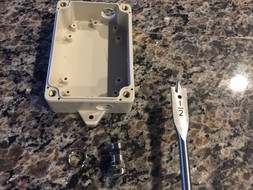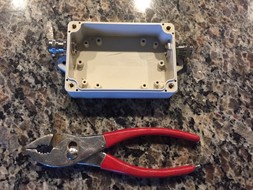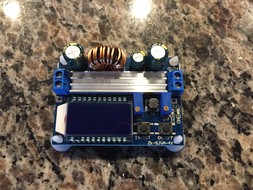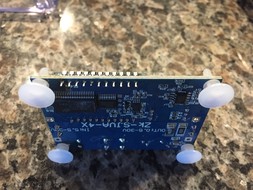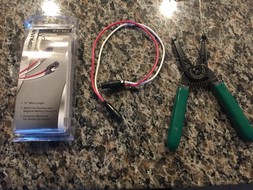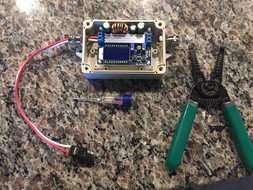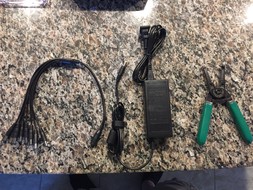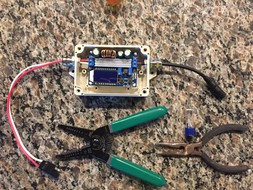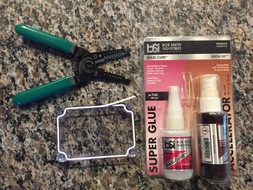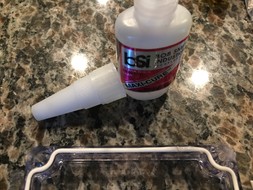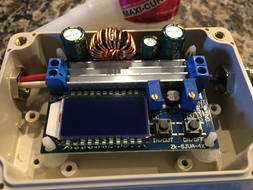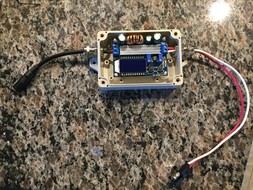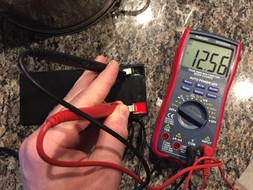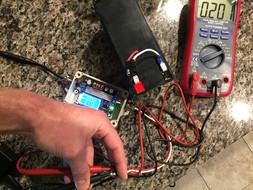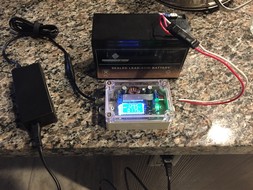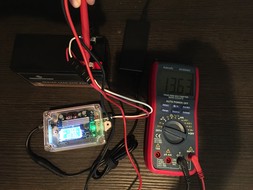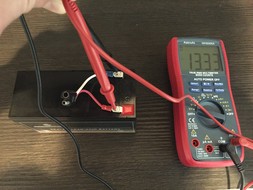DIY Battery Charger
Table of Contents
Overview
In this project I cover a battery charger I put together for my scuba kayak’s 12V 7AH battery.
The charger is a simple float charger so it can be left on the SLA battery indefinitely so long as its maximum current and voltage output settings are kept appropriate (covered later).
Background
There is wealth of information online regarding how to make charging circuits for various applications and I list those below as fantastic reads:
- Buck Converter Basics1
- How to Make a Battery Protection Circuit (over-discharge protection)2
- Buck converter vs. linear voltage regularo - practical comparison3
- Sealed Lead-Acid Battery Charger Circuit using L200 voltage regulator4 5 6 7
- Charging Regimes for Lead Acid Batteries8
- How to Make a 12 Volt Battery Charger Using Buck Converter9 and a youtube commenter’s (Bob Lewis in the previous design’s video link) extension of this design with safety features such as reverse voltage blocking diodes10
I highly recommend reading through all of these links as they contain a wonderful foundation with which to build off of. To destill them down though, basically there are two main approaches to building a charging circuit: either use a simple circuit built around readily available voltage regulators such as the L2004, or use a Buck Converter in conjunction with an AC-DC or DC-DC power converter9 similar to a laptop power supply.
After comparing the parts and process necessary to build the L200 based charging circuit4 to my current Buck Boost Converter design, I decided that the latter would require zero soldering and fewer parts at a similar price point. I based my design off of a youtuber’s design9 mentioned above but decided to make it a little jazzier with a clear, robust enclosure, cable glands and a fancy Buck Converter with voltage and current regulation capability and display readings for each respectively. The Buck Boost Converter already contains reverse connection protection, reverse current portection and short circuit protection which saved me from having to add extra diodes and general safety circuitry as one commenter suggested be done for the youtuber’s design10.
Because boost converters raise their input voltage to a set voltage value, I needed to make sure that its output range could reach my battery’s float charge voltage of ~13.6V8. Furthermore, I need to make sure the output voltage of the AC-DC power converter was within the limits of the input voltage specification of the boost converter. Similary, I need to determine what the power draw would be for the battery during float charging and make sure that both the boost converter and the AC-DC power converter could deliver it. My 12V 7AH SLA battery is recommended to have ~13.6V and 0.2A for float charging8, so my expected power consumption is about: 13.6V * .2A = 2.72W. This is a lower bound as there will be power loss in the power converter, the Buck Converter, the battery and any power transfer lines (especially the converters since they have are performing the voltage and current regulation).
Materials
- Buck Boost Converter x111
- Multimeter with curent and voltage measuring capability x112
- AC-DC power adapter x113
- Enclosure x114
- Connector Cable Glands x215
- 2-Pole Flat Extension cable x116
Enjoy!
Step-by-Step
(click on images for explanation)
Two things to note:
- The charger will attempt to deliver more current the further the battery is from its full charge. However, the Buck Boost Converter protects against overcharing when operating in float charge mode via its maximum current and voltage settings (the two potentiometers on its board).
- The battery’s voltage will decay slightly following removal from the charger after a charge cycle. My battery’s voltage read 13.3V initially after charging but then settled to 12.9V after several hours/days. This decay process is shown in the video below.
-
https://en.wikipedia.org/wiki/Buck%E2%80%93boost_converter ↩︎
-
https://www.instructables.com/id/DIY-Lead-Acid-Battery-Charger/ ↩︎
-
https://www.st.com/content/ccc/resource/technical/document/application_note/10/b7/90/4a/dc/9d/4d/bb/CD00003773.pdf/files/CD00003773.pdf/jcr:content/translations/en.CD00003773.pdf ↩︎
-
https://batteryuniversity.com/learn/article/charging_the_lead_acid_battery ↩︎
-
https://drive.google.com/drive/folders/0B_SjBHPHcKA_cjFiN3lzOXFXSkU ↩︎
-
https://www.amazon.com/gp/product/B0789QVKKF/ref=ppx_yo_dt_b_asin_title_o01_s01?ie=UTF8&psc=1 ↩︎
-
https://www.amazon.com/gp/product/B071JL6LLL/ref=ppx_yo_dt_b_asin_title_o01_s01?ie=UTF8&psc=1 ↩︎
-
https://www.amazon.com/gp/product/B07BF6JZJ9/ref=ppx_yo_dt_b_asin_title_o01_s00?ie=UTF8&psc=1 ↩︎
-
https://www.amazon.com/gp/product/B0714N28YT/ref=ppx_yo_dt_b_asin_title_o01_s02?ie=UTF8&psc=1 ↩︎
-
https://www.amazon.com/gp/product/B00AOBGQ26/ref=ppx_yo_dt_b_asin_title_o07_s00?ie=UTF8&psc=1 ↩︎
-
https://www.amazon.com/gp/product/B0002Q80RW/ref=ppx_yo_dt_b_asin_title_o07_s01?ie=UTF8&psc=1 ↩︎
